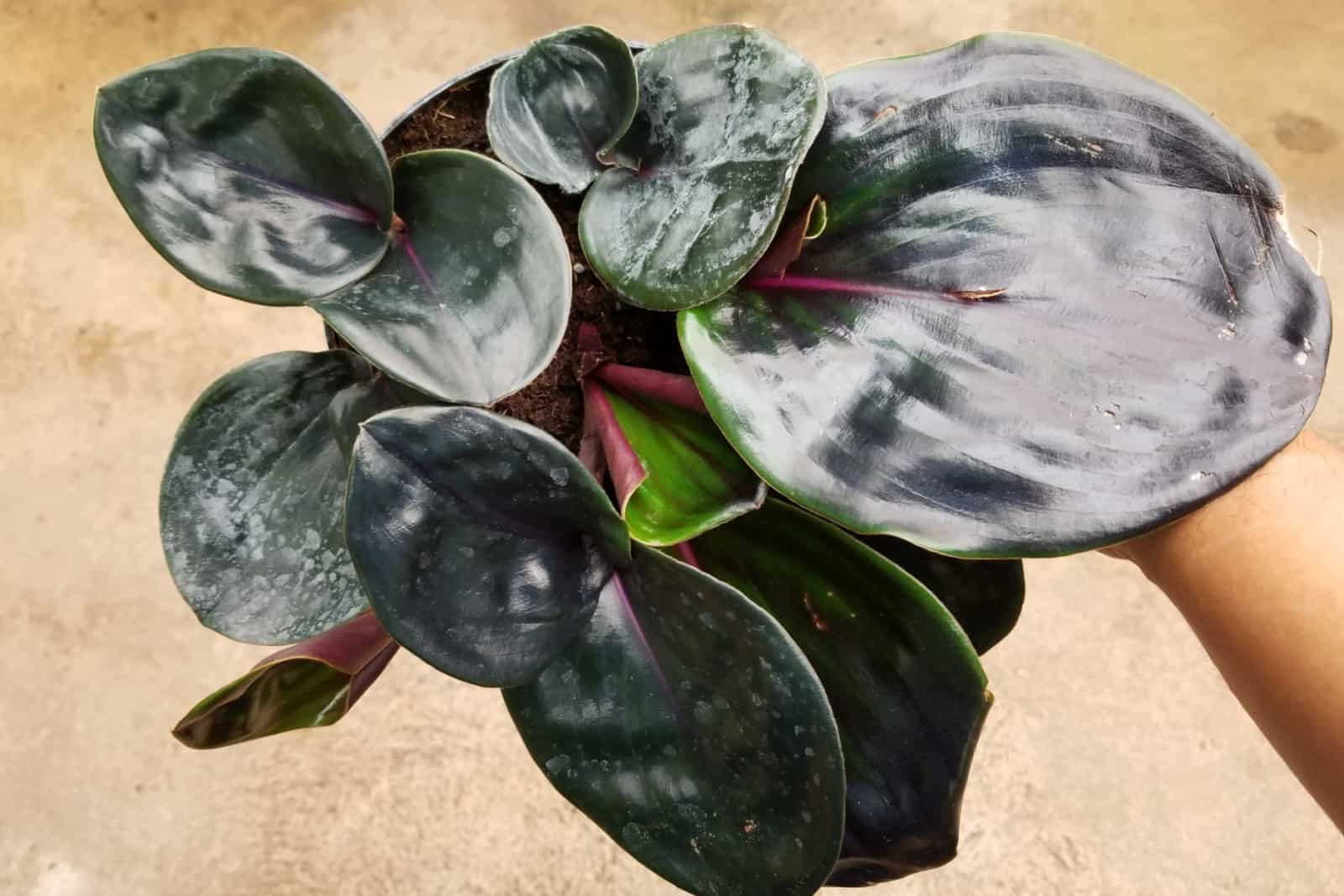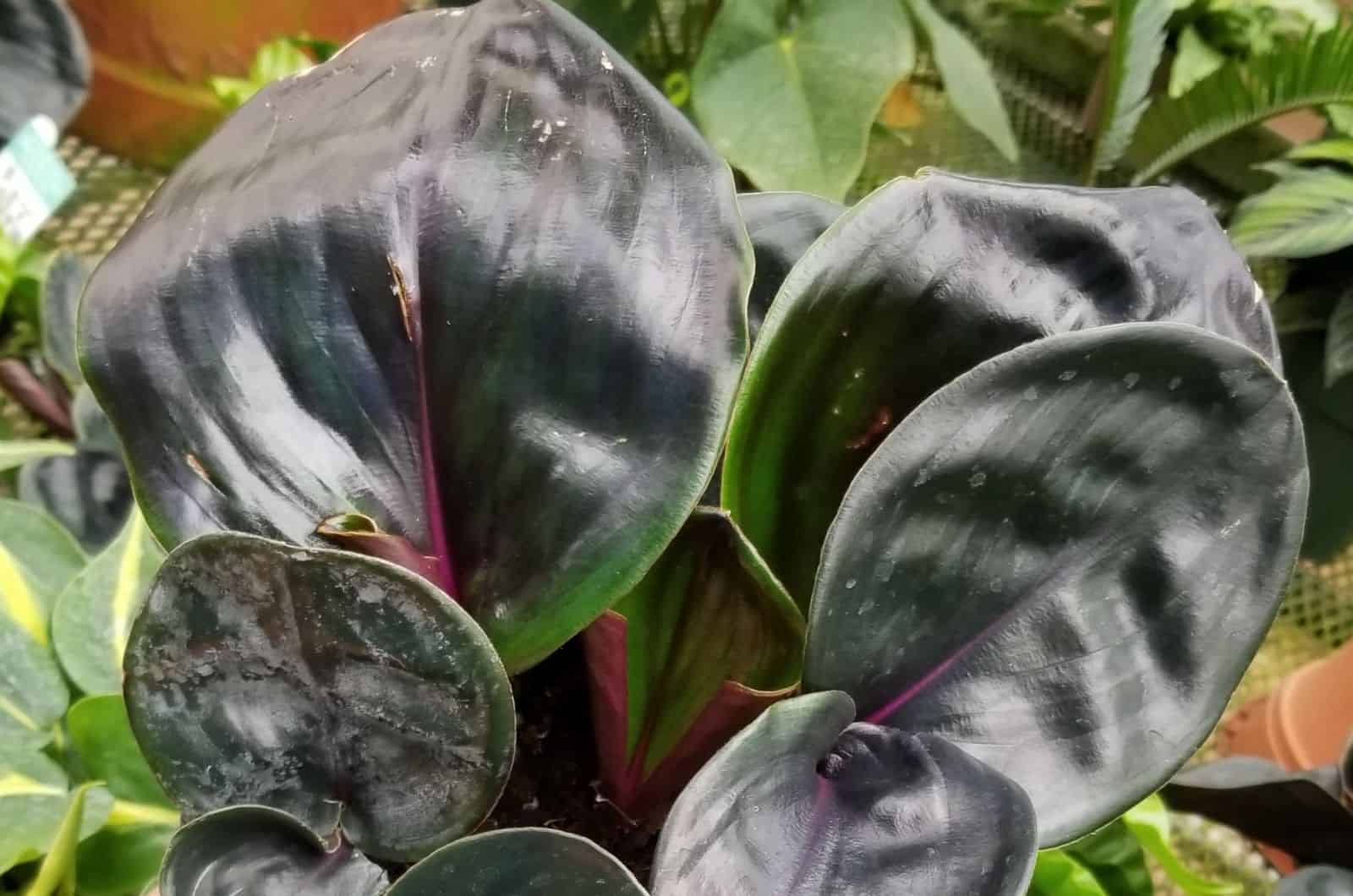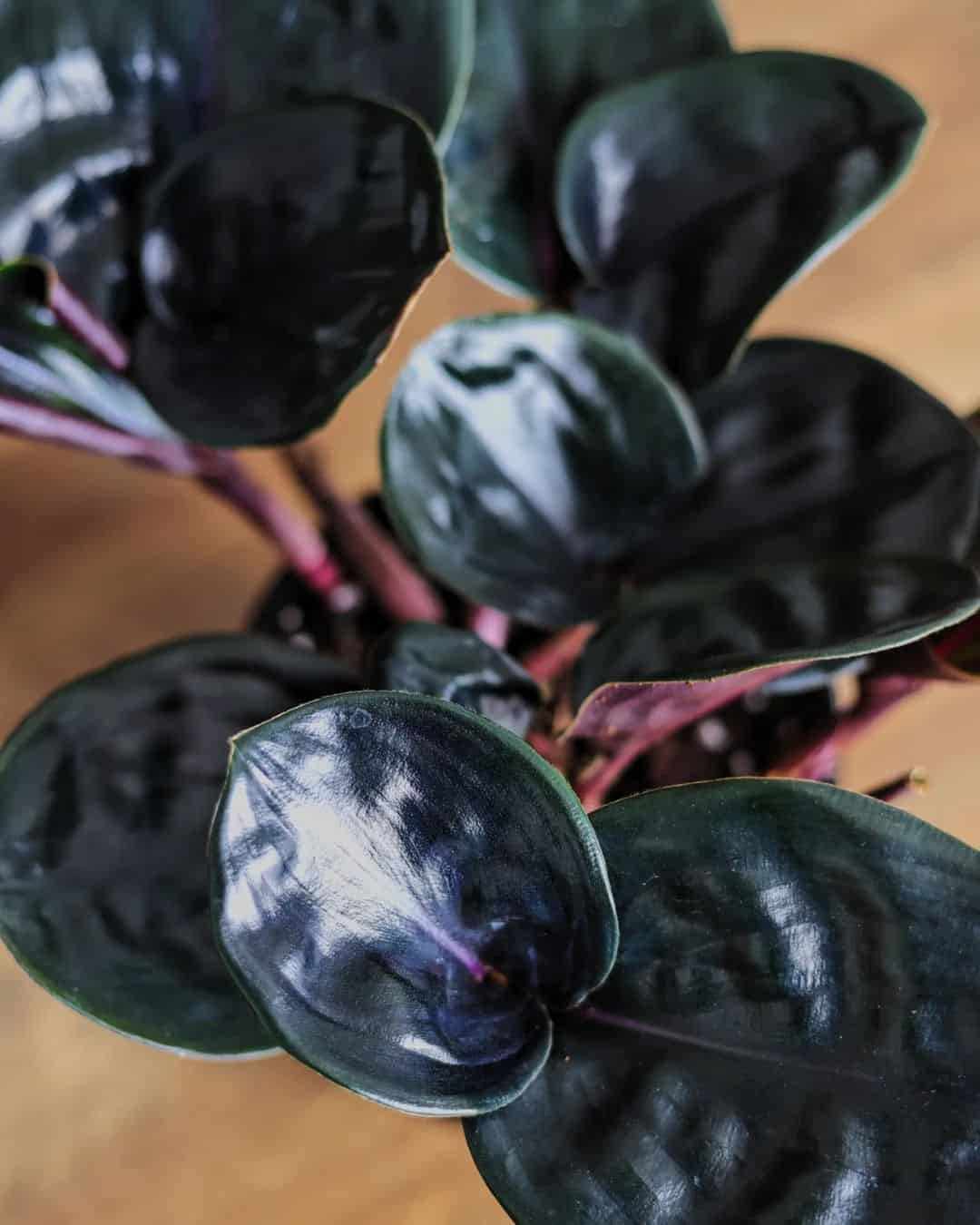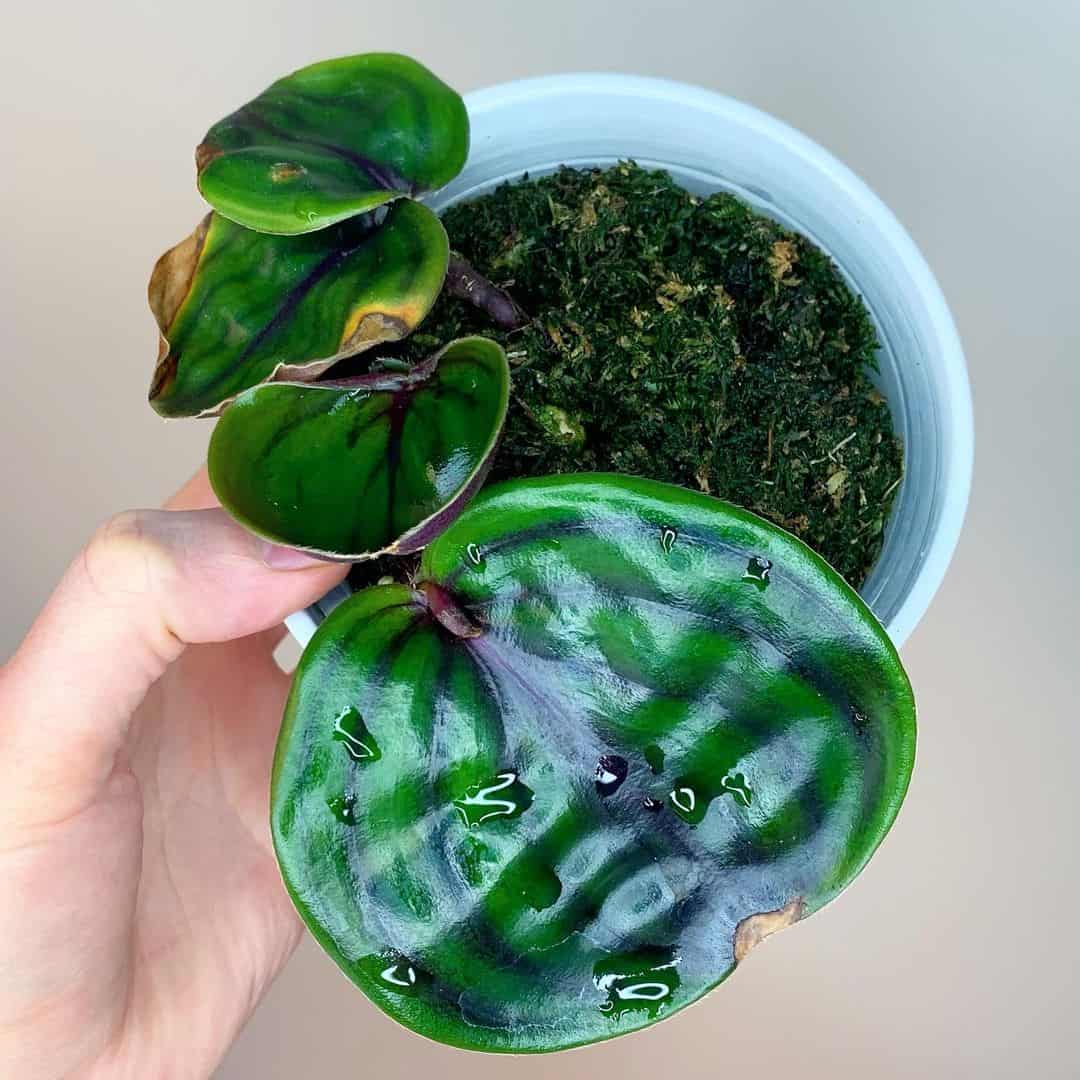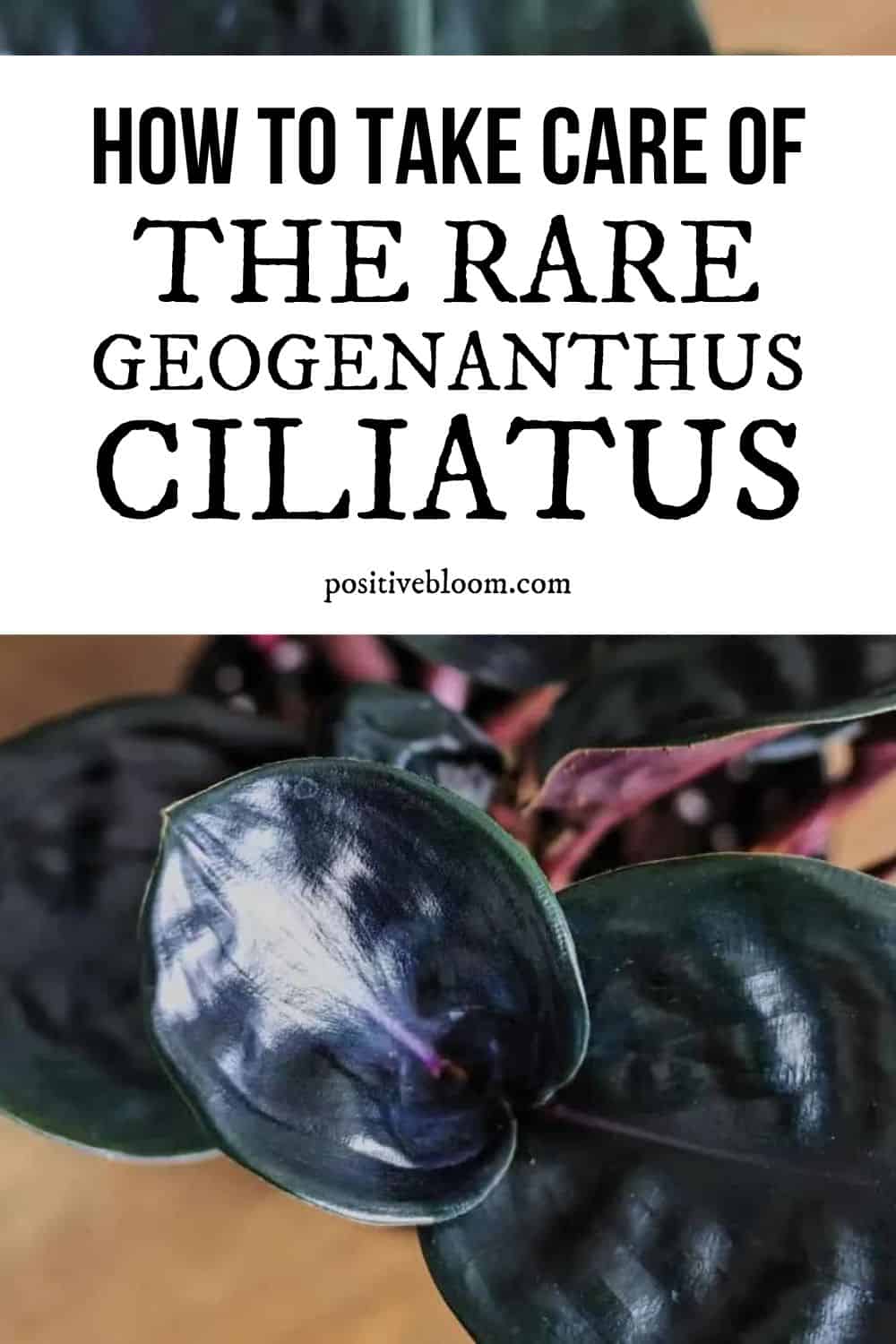Do you want to own a completely black houseplant that simply exudes elegance and uniqueness?
If so, you’re going to love the Geogenanthus Ciliatus, also known as the Geo plant!
This rare plant is a great conversation piece, and it will definitely be noticed by every guest that enters your home. It produces bright green leaves, and as the plant matures they turn dark purple to almost black!
The leaves are also thick and waxy, which makes the plant even more alluring.
This plant is relatively easy to take care of, although there are a few requirements that will require special attention.
So, without further ado, let’s see what’s so special about the Geogenanthus Ciliatus, and also learn how to take care of it.
What Is The Geogenanthus Ciliatus?
This plant is called Geogenanthus Ciliatus – a pretty weird and long name, right?
Well, its nickname, the Geo plant, has nothing to do with geography — it is just easier to say Geo plant instead of Geogenanthus Ciliatus plant!
Nonetheless, this plant originates from deep rainforests and is native to Ecuador, Peru, and Colombia. It belongs to the Commelinaceae family, also known as the Dayflower and Spiderwort family.
This is not a plant that you would commonly see in your local plant shop. They are quite tricky to get, though there are more and more Geo plants each day. My friend was able to get one from Costa farms.
The Geo plant is a medium-sized plant, which makes it perfect for terrariums, though you can simply grow it as any other indoor plant or even use it as a ground cover if the climate is right! These plants produce characteristic dark purple to black leaves that fit wonderfully with black and modern home decor.
In the beginning, the leaves are bright green with purple stripes, and they eventually turn completely dark purple.
Lucky growers that are able to get ahold of this rare plant can combine it with other houseplants, such as Begonia, Pothos, or Hoya plants.
Geogenanthus Ciliatus Care Guide
Surprisingly, it is relatively easy to take care of Geo plants.
Let’s start with the light conditions. These plants aren’t too picky about the lighting — in fact, they actually prefer growing in low light!
Direct sunlight can harm this plant and burn those magnificent leaves. If you have trouble finding the right spot for your Geo plant, you can always invest in some artificial lights for plants.
The next stop in our plant care guide is soil requirements. Finding the right potting soil for your plant is half the job! The Geo plant thrives in well-draining soil that is also slightly acidic. You can either buy ready made soil mix (African violet potting mix, for instance), or you can make one on your own!
All you have to do is mix three parts potting mix with one part orchid bark or perlite (they will make sure that the soil drains well). You can also combine one part sphagnum moss or peat moss, potting mix, and vermiculite or perlite.
These types of plants prefer warmer climates, and any temperature below 50 degrees Fahrenheit could potentially harm them. They thrive in temperatures between 50 and 75 degrees Fahrenheit and are suitable for growing in USDA hardiness zones 11 through 12.
When it comes to humidity levels, they really like it humid — they can even withstand 90% humidity!
Therefore, if you want to boost humidity levels, you can invest in a humidifier or try misting the plant frequently. Another useful method to improve humidity is by creating a pebble tray.
Lastly, you should apply liquid fertilizer or another type of fertilizer suitable for these trending tropical plants. They should be fertilized once or twice a month during the growing season, though this depends on the manufacturer’s instructions.
Common Issues
Beware of common pests, such as spider mites, aphids, and mealybugs — these little critters will invade your dark plant and steal its delicious nutrients. Luckily, you can easily get rid of them by using pesticides or neem oil.
Carefully examine the plant’s behavior. For instance, a plant’s leaves curling often indicates that it’s dry and not getting enough moisture (either from the air or soil). If you spot brown patches on the leaves, then the issue must be inadequate humidity.
Completely dry and crispy leaves mean that the plant has been exposed to direct sun.
Propagation
We mentioned that this is a rare plant, so if you manage to get your hands on it then you must propagate it when the time is right!
This plant can be propagated by division of the rhizomes or via stem cuttings.
Rhizomes Division
Once the plant is mature, it will have an established tuberous root system. All you have to do is gently take the plant out of the pot, remove excess soil from the roots, and use sterile shears to divide the roots into 2 or 3 sections. Put each section in a potting soil that is suitable for their growth.
Inspect the roots to see if there are any mushy or damaged roots — this is often a sign of root rot.
Stem Cuttings
Choose a healthy stem cutting that has at least two leaves attached, dip it in a rooting hormone, and simply put it in a new pot with adequate potting soil. Please remember to use sterile shears when cutting, and make sure to keep the soil moist — this will help the little cutting to adapt easily.
Put the pot somewhere warm and out of direct sunlight.
You can also put the cutting in water and then plant it in the soil once the roots have formed.
To Sum Up
The Geogenanthus Ciliatus plant has been on my wishlist for some time now – I just simply can’t find it anywhere!
Luckily, I am waiting for my friend’s plant to mature so that she can propagate it and gift it to me (I’m super excited!!).
This dark beauty simply exudes elegance and luxury. It is definitely not the kind of plant that you see on a regular basis. What’s also amazing is that it is relatively low-maintenance and easy to take care of — simply make sure that the soil and humidity are proper, and you don’t even have to worry about lighting.
That’s it, folks!
I hope this article was helpful. 🙂
Like this post? Share or pin it for later!

